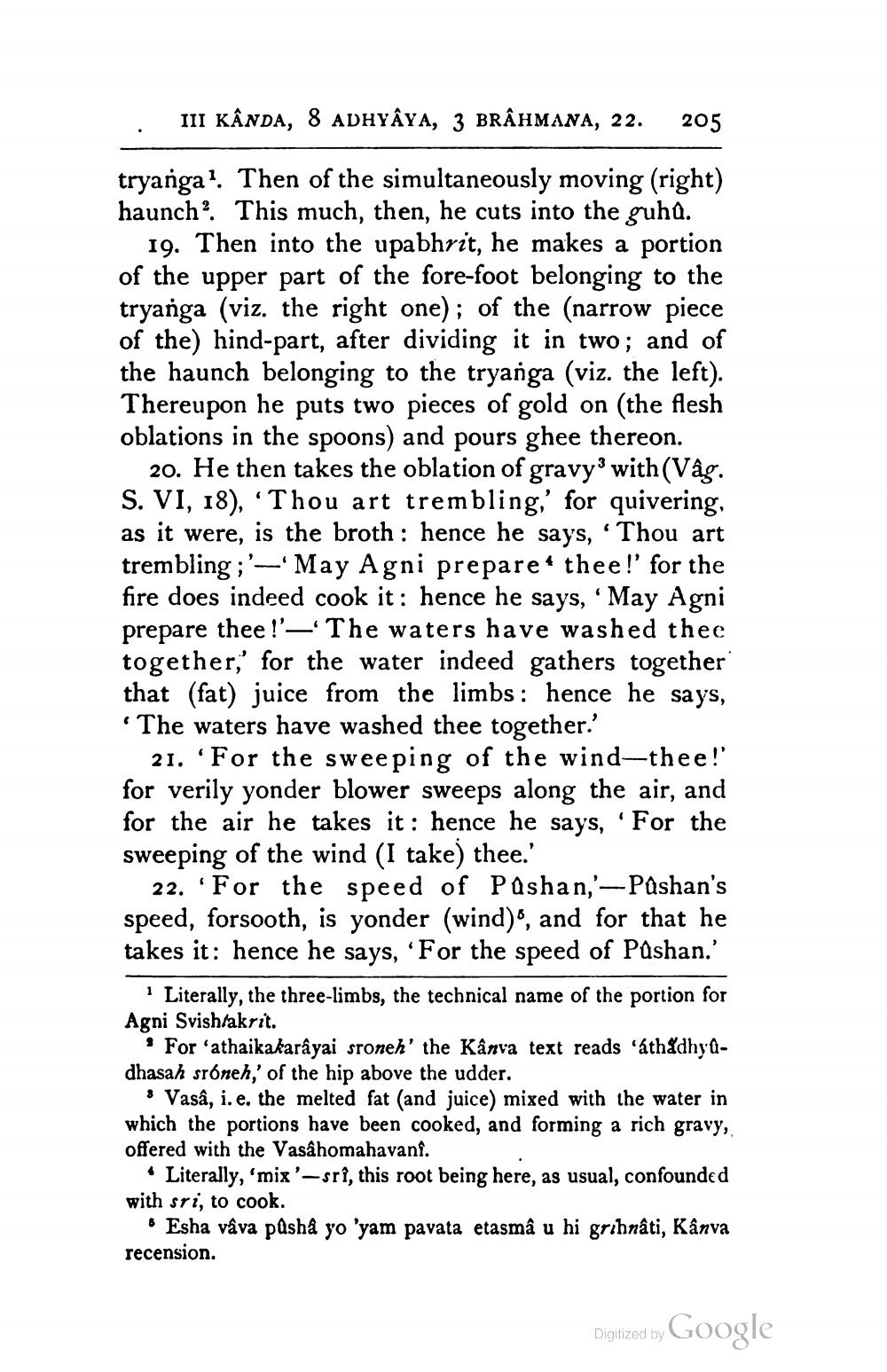________________
III KÂNDA, 8 ADHYAYA, 3 BRÂHMANA, 22.
205
tryanga?. Then of the simultaneously moving (right) haunch?. This much, then, he cuts into the guhů.
19. Then into the upabhrit, he makes a portion of the upper part of the fore-foot belonging to the tryanga (viz. the right one); of the (narrow piece of the) hind-part, after dividing it in two; and of the haunch belonging to the tryanga (viz. the left). Thereupon he puts two pieces of gold on (the flesh oblations in the spoons) and pours ghee thereon.
20. He then takes the oblation of gravy: with (Vâg. S. VI, 18), “Thou art trembling,' for quivering, as it were, is the broth : hence he says, 'Thou art trembling; '-'May Agni prepare thee!' for the fire does indeed cook it: hence he says, 'May Agni prepare thee!'—'The waters have washed thee together;' for the water indeed gathers together that (fat) juice from the limbs : hence he says, "The waters have washed thee together.'
21. 'For the sweeping of the wind-thee!' for verily yonder blower sweeps along the air, and for the air he takes it: hence he says, 'For the sweeping of the wind (I take) thee.
22. 'For the speed of Pushan,'— Pashan's speed, forsooth, is yonder (wind)°, and for that he takes it: hence he says, 'For the speed of Pashan.'
? Literally, the three-limbs, the technical name of the portion for Agni Svishtakrit.
* For 'athaikakarayai sroneh' the Kânva text reads "áth&dhyadhasah sróneh,' of the hip above the udder.
& Vasa, i.e. the melted fat (and juice) mixed with the water in which the portions have been cooked, and forming a rich gravy, offered with the Vasahomahavani.
• Literally, 'mix'-sri, this root being here, as usual, confounded with sri, to cook.
• Esha vâva påshå yo 'yam pavata etasmâ u hi grihnâti, Kânva recension.
Digitized by Google




